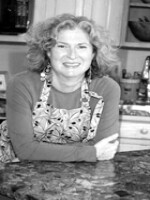I once lost a latke competition to a woman who fried her potato pancakes in goose fat. I have no doubt that was the deciding factor. Goose fat imparts a far better flavor than peanut oil. It is the creme de la creme of fat.
Many Americans, however, are unfamiliar with the wonders of goose fat because they are unfamiliar with goose. The Christmas goose belongs in a Charles Dickens' novel, not a Norman Rockwell painting.
The ancient Egyptians ate goose, and it has been popular in Europe since the Middle Ages. For centuries, it was Eastern European Jews' traditional Sabbath dinner. Marco Polo reported back from China that he had seen a 24-pound goose.
The story goes that Queen Elizabeth was eating goose — a favorite of hers — when she learned that her Navy had defeated the Spanish Armada in1588. She ordered that goose be served every Michaelmas (September 29) thereafter in honor of the victory.
The English who settled America ate goose. But American taste for it lessened with future generations, and goose became a rarity on tables in the New World. There are probably a number of reasons. Goose is all dark meat, with an intense flavor more often compared to beef than chicken. Goose is trickier to cook than chicken or turkey. Finally, and probably most significantly, a goose is one fat bird.
The first goose I made was a disaster, a tough bird swimming in fat. I bought the biggest goose I could find, seasoned it and stuck it in the oven. Learn from my mistakes.
A goose is not a turkey. You don't want an 18-pound goose. The younger (therefore smaller) the goose, the better it tastes. A good size is eight to 12 pounds. Larger (older) birds can be tough.
One good side effect of low demand is that geese are not mass-produced on factory farms. As a result, nice, fresh, free-range geese appear in the butcher's case around the winter holidays. At other times of year, frozen goose is usually available.
The next thing to understand about the goose is that we're talking about a serious amount of fat. This is the bad news and the good news.
A goose has much more fat than a chicken or turkey, although the meat itself is lean. There are easily detached pods of fat that can be pulled out of the goose. Do not discard. Put the fat in a container to render later. This is the good news part.
After removing the obvious fat, prick the goose all over the skin, taking care not to pierce the meat. This gives the remaining fat an escape route during cooking.
At this point, many cooks recommend blanching the goose in boiling water for a minute then letting it dry in the refrigerator for a day or two. This is good if you are organized and plan ahead.
The next step is to prepare a stuffing. (You can, of course, roast a goose without stuffing.) What kind of stuffing depends on the regional source of the recipe. In addition to cooking latkes in goose fat, German Jews stuffed a Hanukkah goose with apples, red cabbage and chestnuts. Germans also make sauerkraut or mashed potato stuffings. Scandinavians favor prunes and apples. The English — and therefore the early American colonists — liked a sage and onion stuffing.
The fat that accumulates in the roasting pan — and there will be plenty — should be siphoned off occasionally with a bulb baster so it doesn't catch fire. Remember, don't even think about throwing out the fat.
Goose is not to everyone's taste. It has a stronger flavor than the chicken breast so common in the American diet. Cooked properly, however, it can be a rich, flavorful meat. This is the time of year to give it a try. And, after carefully collecting the goose fat, anyone can make prize-winning potatoes.
Copyright 2023 NPR. To see more, visit https://www.npr.org.



